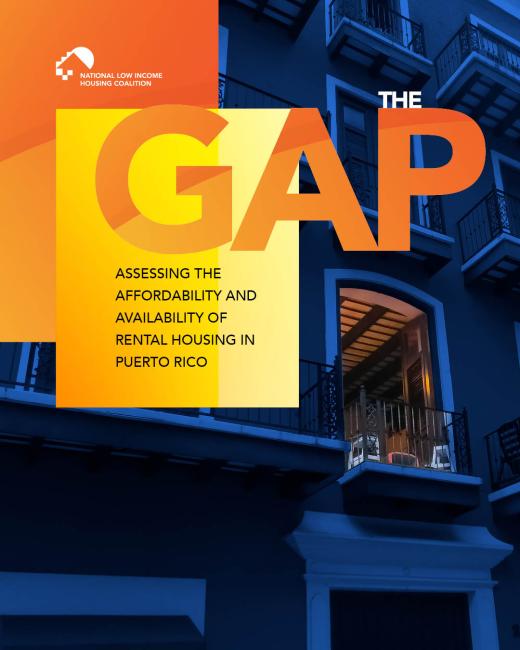NLIHC Releases The Gap: Assessing the Affordability and Availability of Rental Housing in Puerto Rico
Nov 20, 2025
Washington, D.C. – The National Low Income Housing Coalition (NLIHC) has released The Gap: Assessing the Affordability and Availability of Rental Housing in Puerto Rico, its first ever analysis of affordable and available homes in Puerto Rico. Using 2023 Puerto Rican Community Survey (PRCS) data, the authors of this report found a shortage of 54,915 affordable and available homes for extremely low-income renters.

"Much like the mainland U.S., Puerto Rico faces an acute shortage of affordable and available rental homes for the lowest-income renters," said NLIHC President and CEO Renee Willis. “This affordability gap cannot be addressed by a single policy change or without significant investment in housing assistance. While Puerto Rico has unique challenges, robust federal housing investments and reforms are needed nationwide to support the lowest-income renters."
Each year, NLIHC publishes The Gap: A Shortage of Affordable Homes using American Community Survey Public Use Microdata Sample (ACS PUMS) data to measure affordable rental housing availability for extremely low-income and other income groups nationwide. This year’s report found a shortage of 7.1 million rental homes affordable and available to renters with extremely low incomes, with only 35 affordable rental homes available for every 100 extremely low-income renter households. While NLIHC publishes this analysis every year, previous reports did not include Puerto Rico, as it is not covered by the American Community Survey (ACS). For the first time, NLIHC has expanded its analyses on the availability of rental housing affordable to extremely low-income households to Puerto Rico using PRCS data.
A few key findings from the new report include:
- Only 66 homes are affordable and available for every 100 renter households with extremely low incomes, resulting in a total shortage of 54,915 homes affordable and available.
- 68% of all renters experiencing cost burdens, and 86% of renters experiencing severe cost burdens, are from extremely low-income households.
- Dominicans and South Americans are significantly more likely to be extremely low-income renters and, as a result, face greater housing challenges than other ethnic groups.
This report continues NLIHC’s efforts to support housing and disaster recovery in Puerto Rico. The U.S. territory has experienced delays in disaster housing assistance following Hurricanes Irma and Maria, as well as the 2020 earthquakes, which have contributed to ongoing displacement and inadequate housing. With climate-related disasters becoming more frequent and severe, the report urges the federal government to provide equitable funding for housing and disaster recovery.
The report shows that solutions to the pervasive housing cost burdens faced by the lowest-income renters in Puerto Rico can be achieved by recognizing the unique challenges this community faces. Additionally, in partnership with the Puerto Rican community, policymakers on the mainland can assist in advocating for significant investments in federal housing programs, such as support for the voucher program, increased investments to preserve and protect the existing federally assisted housing stock and ensuring that funding for housing and disaster recovery is distributed equitably.
View the complete The Gap: Assessing the Affordability and Availability of Rental Housing in Puerto Rico report here.
This report is also available in Spanish here.
###